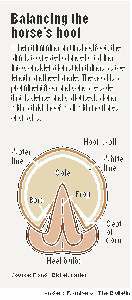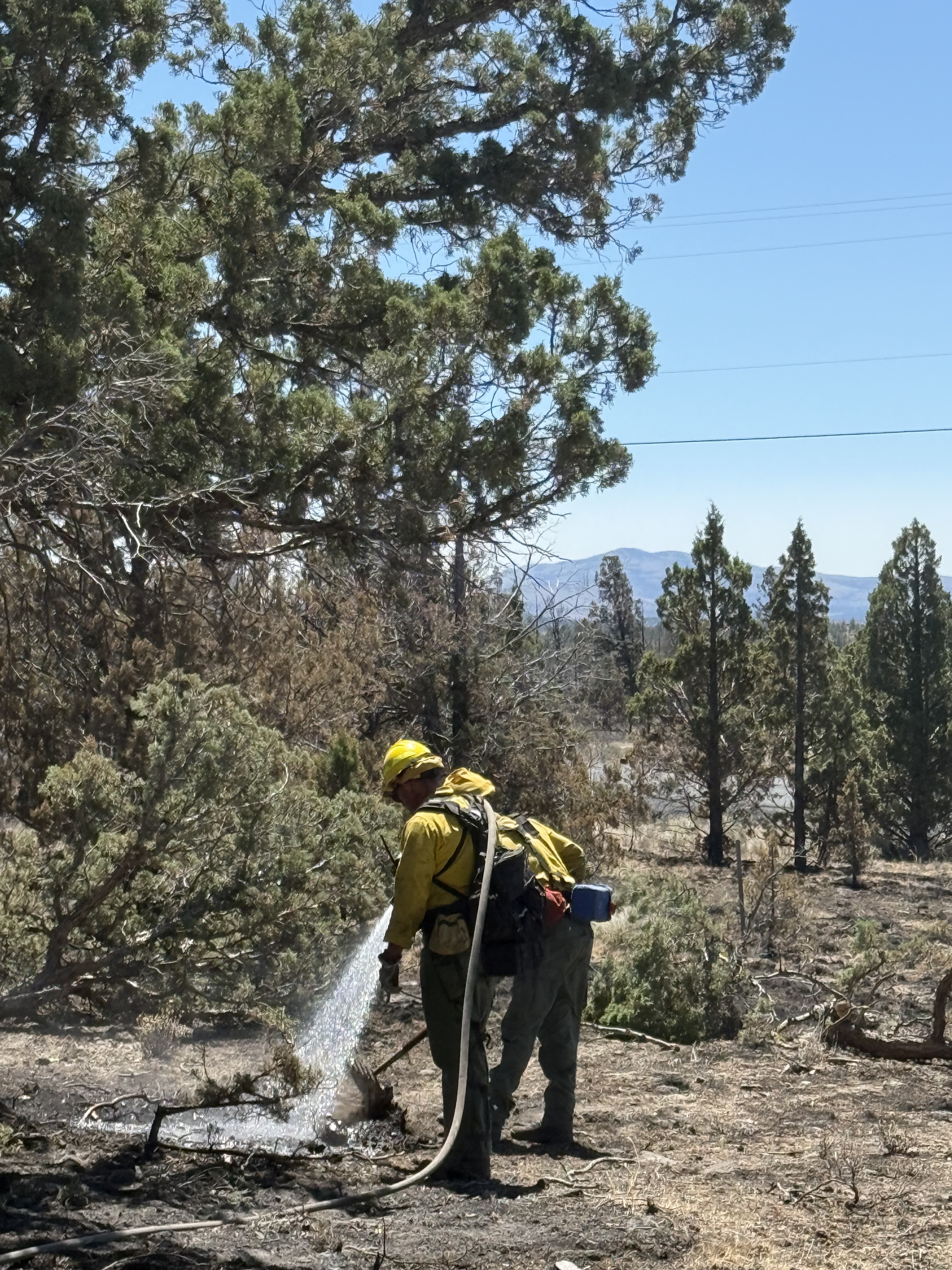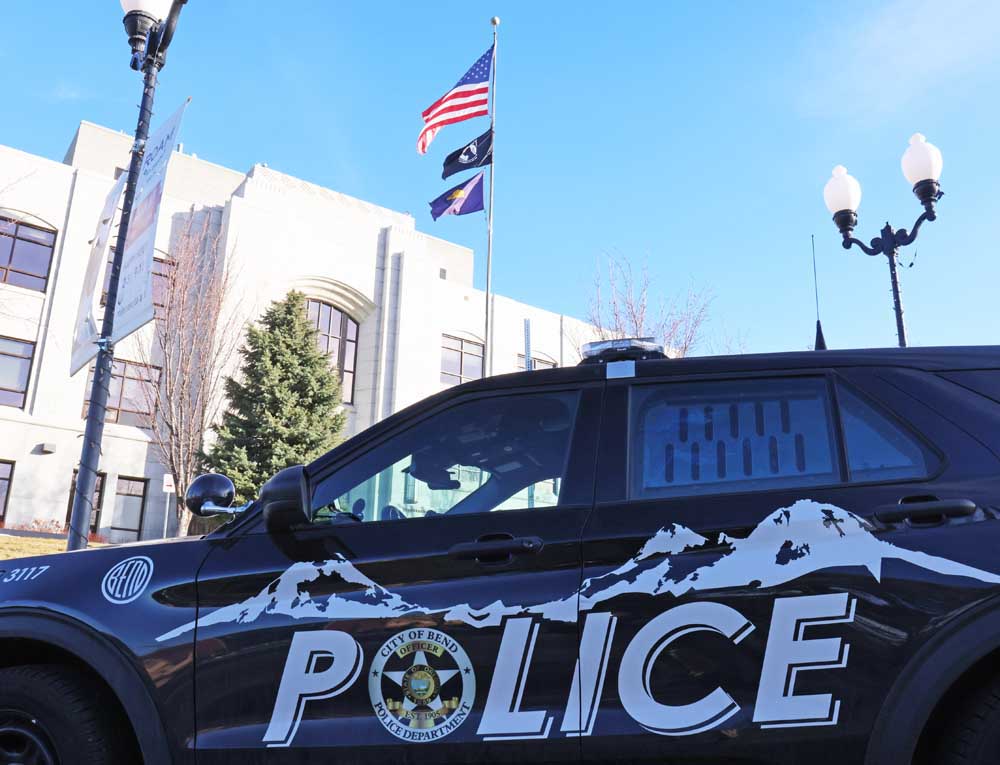Hoofing it barefoot
Published 4:00 am Monday, March 2, 2009

- Hoofing it barefoot
There’s a small but growing trend afoot among Central Oregon equestrians who are ditching their horse’s metal shoes and going back to nature.
It’s called the barefoot movement. And while there’s nothing new about a horse with no shoes, the idea that previously shod pleasure and working horses can have their hooves trimmed in such a way that allows them to be ridden and perform that same work with “bare feet” is still quite novel.
Trending
After 30 years as a traditional farrier, Randy Bickel, who lives about 10 miles east of Alfalfa, nailed on his final horseshoe in October.
His business is now entirely made up of barefoot horses, and Bickel specializes in trimming the barefoot hoof.
“The best farrier is Mother Nature,” says Bickel, as he clips and files a palomino quarter horse mare named Duchess on a recent visit to a Powell Butte ranch.
Because they don’t cover the kind of ground, which acts as a natural file, that their wild cousins do, most domesticated horses require hoof trimming. But trimming a horse hoof to accommodate a shoe is different than a barefoot cut. According to Bickel, the natural trim basically mimics natural wear that a domestic horse isn’t able to achieve.
Bickel explains that the aim is to balance the foot, which he says includes 500 different considerations, by creating a longer toe length and more shallow heel angle than horses being trimmed for shoes. The goal is a prominent frog and concave sole that is dense and calloused, along with a thick hoof wall with no flares or cracks.
“A barefoot trim is designed to fit the natural parameters of the foot,” says Bickel, who playfully calls himself an old redneck from Wyoming. “A shoe trim is basically just chopping everything off on the bottom of the foot to make it flat so the shoe will fit on it.”
Trending
Reacclimation
Claire Davis, of Bend, a longtime horsewoman and avid trail rider, recently became a barefoot believer. About 15 months ago, she removed the shoes for good from her 14-year-old Arab/thoroughbred cross gelding, Dax. Dax walked gingerly at first, but Davis says she continued to exercise her horse every day on soft surfaces such as sand and grass.
“Now he could step on a rock and not flinch, no problem,” says Davis, who notes that it took Dax about six months to build strong feet. “I found that he was much more comfortable without shoes. When I had shoes on him, his heels were contracted … like someone having their toes pinched in a pointy-toe shoe.”
Davis adds that owners often give up on barefoot trimming too soon because their mount appears lame, or they are hesitant to let a horse go shoeless because of the time it takes for the horse’s sole to reacclimate.
Indeed, going barefoot takes both time and effort on the part of the owner. A barefoot horse standing daily in a stall or paddock is not going to build up the calloused sole it needs.
Davis hand-walked or trotted her horse a minimum of 20 minutes a day and kept him out to pasture to encourage him to move. Today, Dax can walk, trot or canter on trails for hours a day without a hitch, she says.
“If a horse is only ridden and pastured in a certain area, their feet are going to adapt to that area,” says Sharon Sharpnack, a retired equine veterinarian from Sisters, who removed the shoes from her Norwegian Fjord driving mare about five years ago. “If you’re going up in the mountains and ride on lava rock, the horse’s feet will have trouble because they’re not adapted to that area.”
To help a horse weather the tender-footed period or for any unshod horse that encounters rough terrain, hoof boots can offer protection. There are multiple manufacturers on the market today, and the Kevlar, rubber or hard plastic boots range in price from $75 to $175.
“Horses really need to get out and move,” Sharpnack recommends. “The whole integrity of the hoof and circulation depends on the horse moving. The wild horse is walking and grazing, walking and grazing. Barefoot horses are never going to get tough feet if they’re only in a wood-chip paddock or stall.”
Barefoot enthusiasts
Barefoot riders claim their horses can do anything that a shod horse can: jump, endurance, trails, working cattle, even rodeo.
Barefoot enthusiasts also believe that unshod hooves better allow the natural contraction and expansion process to take place, thus promoting better blood flow and circulation through the hoof.
“The more radical side of this argument is that shoeing is bad, and damages horses and creates lameness issues,” says Tim Phillips, a 34-year veteran of equine medicine and owner of Desert Valley Equine Center in Redmond. “There (are) certainly ways of shoeing a horse that would definitely restrict circulation. But in the properly applied shoeing job, that’s not a common occurrence.”
Phillips agrees that for many horses, going barefoot is a perfectly workable option.
“It’s mainly about getting the trim right and letting the foot get acclimated to being barefoot, particularly if you’re going to be in more rigorous conditions,” the vet explains.
That said, Phillips argues that shoes are still an important tool for some horses, including reiners performing sliding stops, jumpers leaping over obstacles on a grass course and race horses who need traction on turf.
“There are going to be some events and some applications where shoeing a horse is superior to being barefoot,” he says. “As a veterinarian, I definitely have some instances through lameness issues where therapeutic shoeing makes a huge difference to us, such as (an) anatomical issue or injuries to the hoof structure itself; injuries where corrective shoeing makes a huge difference in the healing process.”
For those horses who do make good candidates, going barefoot can equal cost savings. A barefoot trim costs $40 compared to shoeing, which starts at $100.
Horse owners can learn more about the benefits and process of going barefoot at a Hoof Care Clinic from 10 a.m. to 5 p.m. on March 14 at Hawkview Ranch, east of Bend. The clinic, taught by Bickel and Prineville trimmer Jason Darragh, will include demos, model horses and cadaver hooves. Cost is $50. For more information, call Hawkview Ranch at 541-388-1410.








